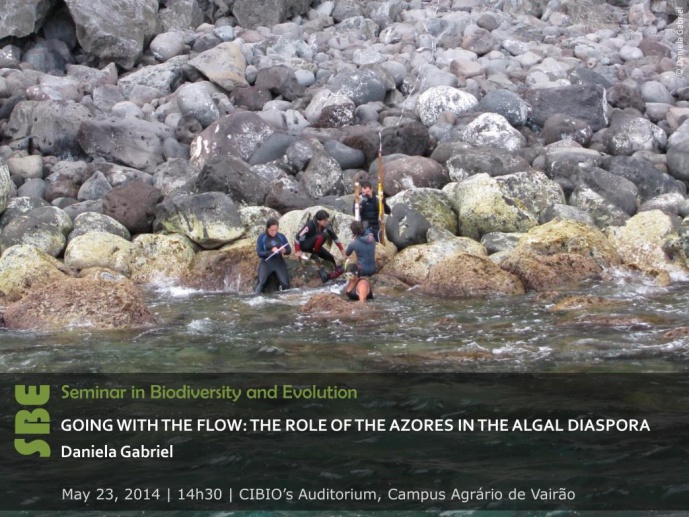GOING WITH THE FLOW: THE ROLE OF THE AZORES IN THE ALGAL DIASPORA


The phycological research on the Azorean marine macroflora is diverse and encompasses a history of almost 200 years, starting with occasional scientific expeditions passing by the archipelago to state-of-the-art investigations developed by researchers from the University of the Azores. Genetic studies have been developed in collaboration with other phycologists who provide worldwide data, partial funding and valuable expertise in the latest techniques. The molecular characterization of red and brown algae of the Azores revealed the existence of unknown records as well as new species, including endemics for these islands. Additional research has also aimed at clarifying the life cycle of Azorean marine representative species, revealing complex alternation of generations schemes. These studies complemented the taxonomic and phylogenetic characterizations that were already being developed.
In order to view algal migration patterns and evolutionary implications as a whole, some environmental aspects have also been studied. Alien species in the Azores have been identified and their possible origins explored, in particular those with an invasive behavior. Another important project involves the characterization of the coastal waters of various Azorean islands that will result in quality values in accordance to the European Union Water Framework criteria. The impact of the BP Horizon platform oil spill on the macroalgal community of the Gulf of Mexico is also being studied, including its effects on some amphi-Atlantic taxa.
Besides completing the present studies, future work involves funded projects of regional, national and international levels on different themes as invasive species, DNA barcoding, metagenomics, molecular clock and biodiversity databasing.
Daniela de Lima Gabriel attended the Federal University of Rio de Janeiro (Brazil) between 1996 and 1999, where she was awarded a degree in Plant Biology. During her first undergraduate year, she was initiated in Plant Taxonomy, especially on the classification of seaweeds, by Dr. Yocie Yoneshigue-Valentin. The following semesters were spent discovering different aspects of algal reproduction, culture and taxonomy. Later, she worked on reproductive isolation of Bromeliaceae with Dr. Tania Wendt while teaching lab classes of flower identification. In 2000, after finishing her Undergraduate thesis on Genetic transformation of rice supervised by Dr. Vânia Pádua, she began teaching Chemistry and Biology for High School students. She moved to the Archipelago of the Azores, Portugal, in 2002, to conduct research in classical and molecular taxonomy of Red Algae, and, since 2005 she has also been working with the Seaweed Lab at the University of Louisiana at Lafayette, USA. In 2008 she defended her Ph.D. thesis on the Phylogeny of the Order Nemastomatales (Rhodophyta), wrote under the supervision of Dr. Ana I. Neto and Dr. Suzanne Fredericq. The three years following her graduation, she worked for the Azorean Government developing Outreach and Education projects throughout the Archipelago. Meanwhile she dedicated part of her time to the study of seaweeds, taking part in projects in Europe and USA. Since 2011 she has been developing pos-doctoral research under the supervision of Dr. James Harris and Dr. James Norris. Her main research interest is in the Phylogeny of Red Algae, especially of those involving alternation of generation between gelatinous and crustose phases. She is also interested in studying morphological and developmental features that help distinguishing the members of species-complexes. Other areas of interest are Biodiversity and Ecological Monitoring.
[Group Leader: António M. Frias Martins, Biodiversity and Islands - Insularity and Connectivity in an Atlantic Context]
Image credits: Daniela Gabriel